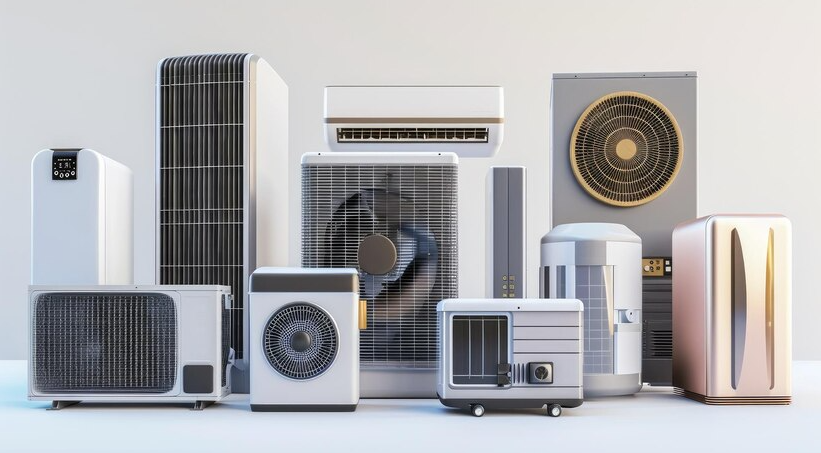Your HVAC drain line might not be something you think about often, but it plays a huge role in keeping your system running smoothly. It’s responsible for removing condensation that naturally forms inside your air handler during the cooling process.
Here’s how it works: As your HVAC system cools your home, the evaporator coil absorbs heat from the air, causing moisture to collect and turn into water. That water needs a way out—and that’s where your drain line comes in, safely carrying it away from your system to prevent water buildup and damage.
The Importance of the HVAC Drain Line
The HVAC drain line, also known as the condensate drain line, is responsible for carrying excess moisture away from your system. This condensation comes from the evaporator coil inside your air conditioner or heat pump. If the drain line becomes clogged or blocked, the water may back up into the system, potentially causing several issues:
- Water Damage: Excess water can leak into the HVAC system, causing rust, mold, and water damage to the surrounding walls and insulation.
- Increased Humidity: When the system’s drain line is blocked, the moisture cannot be properly expelled, leading to an increase in humidity levels inside your home.
- Decreased Efficiency: A clogged drain line can affect the overall efficiency of your system by causing it to work harder than necessary to cool your home.
To avoid these issues, it’s essential to maintain your HVAC drain line and ensure that it’s functioning correctly. With regular maintenance and attention, homeowners can prevent costly repairs and keep their HVAC systems running smoothly.
Signs That Your HVAC Drain Line Needs Repair
If you notice any of the following signs, it may indicate that there is an issue with your HVAC drain line:
1. Water Leaks Around the Indoor Unit
If you see water pooling around the base of your air handler or near your indoor HVAC unit, this is a clear sign that the drain line may be clogged. Water should be drained away from the system, not allowed to accumulate around it. A clogged drain line will prevent the condensation from exiting the system properly, causing leaks.
2. Increased Humidity Inside Your Home
A blocked drain line can cause increased humidity levels inside your home. This happens because the system is unable to remove the moisture from the air efficiently, which may result in a stuffy or damp feeling inside. If you notice that the air feels clammy or if there is excessive moisture in the air, the drain line could be blocked.
3. Strange Odors Coming from the Vents
If your HVAC drain line is clogged, water can begin to stagnate inside the line, creating the perfect environment for mold and bacteria to grow. This can lead to foul odors circulating through your vents. A musty or moldy smell is often a sign that there’s a problem with the drain line or the excess moisture inside the system.
4. Water Stains on the Ceiling or Walls
Water stains on your ceiling or walls near your HVAC unit are a sign that moisture has leaked out of the system. This could be due to a clogged drain line that prevents proper drainage of condensation. Left unchecked, this could lead to significant water damage.
5. System Shutting Off or Malfunctioning
When the drain line becomes clogged, the excess water can trigger a safety switch that shuts off the system to prevent water damage. If your HVAC system is frequently turning off on its own or not operating as expected, a clogged drain line might be the issue.
DIY Maintenance Tips for the HVAC Drain Line
Maintaining your HVAC drain line is an essential part of ensuring your system operates efficiently and avoids costly repairs. Here are some practical DIY maintenance tips to keep the drain line in good working order:
1. Turn Off the Power
Before performing any maintenance on your HVAC system, always ensure that the power is turned off. This will prevent electrical accidents and allow you to work on the system safely. You can either switch off the power at the thermostat or disconnect the power at the circuit breaker.
2. Check for Clogs
The most common issue with HVAC drain lines is clogs, often caused by dirt, algae, or mold growth. To check for clogs:
- Locate the drain line, which is typically a PVC pipe near the indoor unit.
- Use a wet/dry vacuum to try and suck out any debris that may be causing a blockage. Attach the vacuum hose to the end of the drain line and run it for a few minutes to clear out the clog.
- Alternatively, you can use a plumber’s snake to gently dislodge any stubborn debris.
3. Flush the Drain Line
To ensure that the drain line is completely clear, you can flush it with a mixture of water and vinegar. This will help break down any algae or mold that may have built up inside the pipe.
- Pour a cup of distilled white vinegar into the drain line via the access point, which is typically located near the air handler.
- Allow the vinegar to sit for about 30 minutes to break down the buildup.
- Follow this by flushing the line with a cup of water to clear out any remaining debris.
4. Clean the Drain Pan
In addition to cleaning the drain line itself, it’s also essential to clean the condensate drain pan. This is the pan that collects the water before it is directed into the drain line.
- Check for any standing water or debris in the drain pan.
- Clean the pan with a mild detergent and warm water, making sure it’s completely dry before reattaching it.
5. Inspect the Drain Line’s Outlet
Ensure that the drain line’s outlet is clear of debris or obstructions. The outlet is typically located outside your home, and it is essential for draining the condensation away from your HVAC system. Make sure the water is flowing freely out of the system when you flush the line.
6. Install a Drain Line Float Switch
For added protection, consider installing a float switch, which is designed to shut off the system if the drain line becomes clogged. This will prevent water from backing up into the system and causing damage. Many modern HVAC systems come with a built-in float switch, but it can be added to older units for peace of mind.
When to Call a Professional Technician
While many drain line maintenance tasks can be performed by homeowners, there are times when professional assistance is necessary. If you notice any of the following signs, it’s time to call Elite Air & Heat of Summerville for help:
1. Persistent Clogs
If you’ve tried clearing the drain line multiple times, but the clog persists, it may indicate a more serious issue with the line, such as a broken pipe or a deeper blockage. A professional technician can assess the problem and fix it effectively.
2. Water Damage or Mold Growth
If you notice significant water damage or mold growth in the area surrounding the HVAC system, it’s time to call in an expert. Water damage can affect the structure of your home, and mold can lead to health issues if not properly addressed.
3. System Malfunctions
If your HVAC system is shutting off frequently due to water backups or the float switch is constantly tripping, a technician can help diagnose the issue and prevent further damage to the system.
4. Inability to Access the Drain Line
In some cases, the drain line may be difficult to access or repair. If you’re unable to reach the line or if it requires extensive repairs, calling a professional ensures that the job is done safely and correctly.
Why Homeowners Trust Elite Air & Heat of Summerville
When it comes to HVAC drain line maintenance and repairs, you need a team that’s reliable, knowledgeable, and truly cares about your home’s comfort. At Elite Air & Heat of Summerville, we go beyond just fixing problems—we provide expert care and long-term solutions to keep your system running at its best.
What Makes Us the Best Choice?
Skilled & Experienced Technicians
Our highly trained experts know HVAC systems inside and out. Whether you’re dealing with a clogged drain line, backups, or an inefficient system, we’ll diagnose and fix the issue quickly and effectively.
Comprehensive HVAC Solutions
From simple drain line flushes to full system repairs, we offer complete HVAC maintenance services to prevent breakdowns and keep your home comfortable year-round.
Customer Satisfaction Comes First
We’re not happy until you’re happy. Our team is committed to providing top-notch service, ensuring your HVAC system runs smoothly and delivers the comfort you deserve.
Keep Your HVAC Running Smoothly – Easy DIY Drain Line Tips
Your HVAC drain line plays a key role in removing excess moisture from your system, preventing water damage, mold growth, and efficiency issues. A little routine maintenance can go a long way!
- Check for clogs – A quick visual inspection can help you catch blockages before they become a problem.
- Flush the line – Pouring a mix of warm water and vinegar down the drain line can help clear out debris and prevent buildup.
- Monitor for leaks – If you notice standing water or damp areas near your system, your drain line may need professional attention.
While DIY maintenance helps, some issues require expert care. If you’re dealing with persistent clogs, water damage, or an HVAC system that’s not draining properly, trust Elite Air & Heat of Summerville to get things back on track.
Give us a call today and let us take care of your HVAC system—so you can enjoy peace of mind and year-round comfort!

